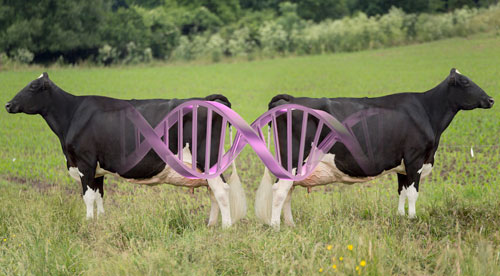
For an organization that prides itself on science-based research, the Consumers Union and its widely read Consumer Reports and ShopSmart publications have gotten dairy wrong on a number of occasions over the years. Its latest promotional flyer for its ShopSmart publication is no exception as the organization repeated its floundering ways when giving its advice for purchasing dairy products.
Its Rule #20 suggests to "Rethink your milk."
"Sure the possibility is remote, but you could be drinking milk from cloned cows . . . and never know it," continued ShopSmart. "The FDA does not require labeling on milk from cloned animals. The agency says there is no difference between milk from cloned cows and normal cows and sees no reason for such a label. You may disagree. If you'd prefer to avoid milk from cloned cows, buy organic."
Milk from cloned cows a reason to switch to organic. That seemed rather farfetched to us after Wisconsin dairy producer Pam Selz Pralle brought the report to our attention. In our phone call and follow-up letter to Consumer Reports on "Rule #20," we started with some basic facts about dairy:
There are roughly 10 million dairy cows in North America. Of that total, 9.2 million are in the U.S. and 900,000 reside in Canada.
Since Dolly the sheep was first cloned, there have been 257 cloned dairy animals in North America. We know that all those animals are not alive as 155 were born prior to 2006. That leaves the entire North American dairy industry with 102 copied animals. A portion of those remaining clones were bulls, which of course do not produce milk.
While the U.S. Food and Drug Administration (FDA) has found that there is no risk of drinking milk from cloned cows, let's go with the Consumer Reports' notion that there may be a risk. Again, farfetched since not one peer-reviewed scientific study has documented a health concern.
If every cloned dairy animal was still living (257 total) and the North American dairy herd was static at 10 million head, there would be a 0.006 percent chance of drinking milk from a clone. That represents the highest risk level. (We also know that the dairy herd is not static, as roughly 30 percent of all dairy cows are harvested for beef each year.)
A more realistic scenario is that half of the 102 clones born since 2006 are still alive. Taking 51 (half of 102) and dividing it by 10 million dairy cows, we end up with a 0.0005 percent chance of drinking milk from a clone.
From our vantage point, if that 0.0005 percent risk factor warrants Consumer Reports listing "Rethink your milk" as a top 20 buying decision, we live in an extremely safe world.








